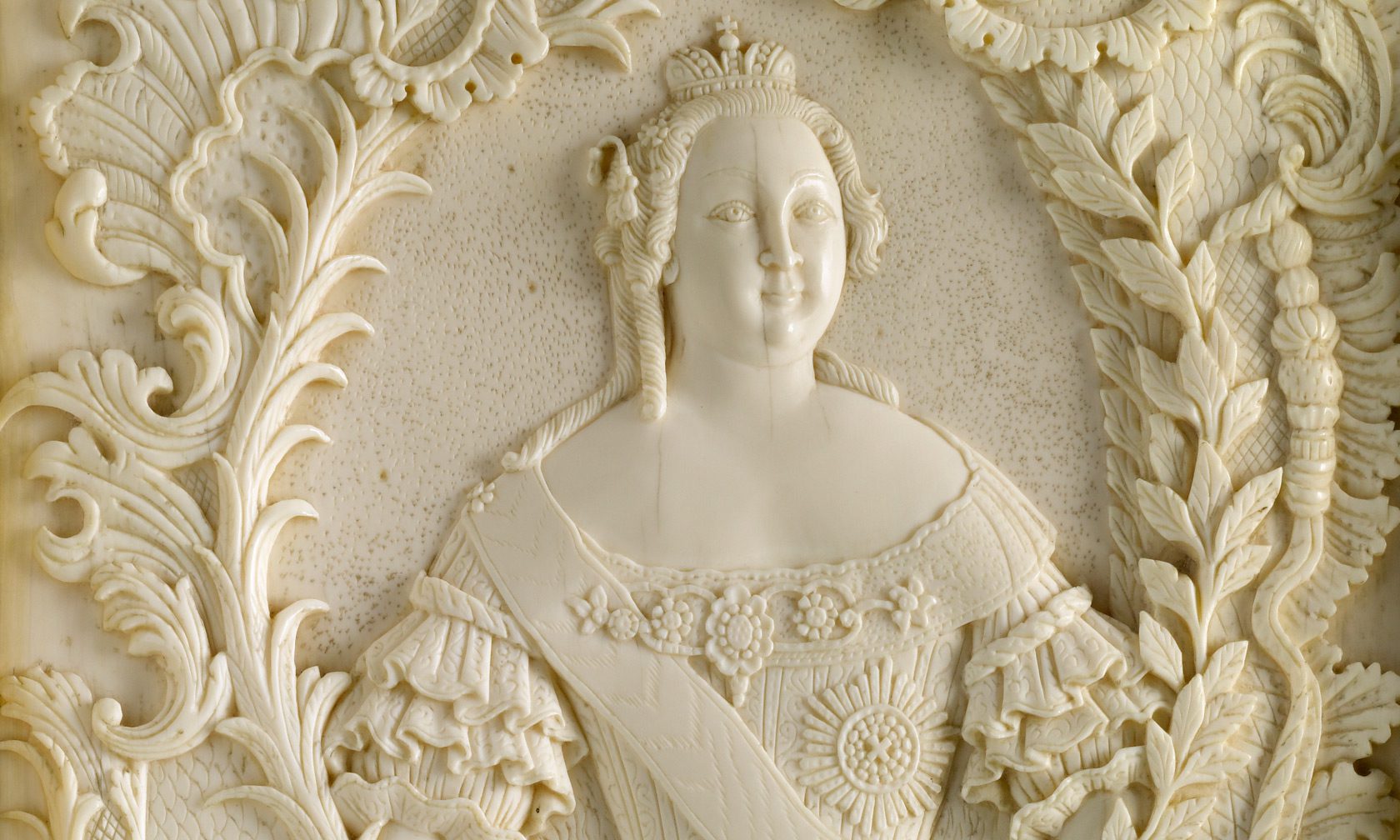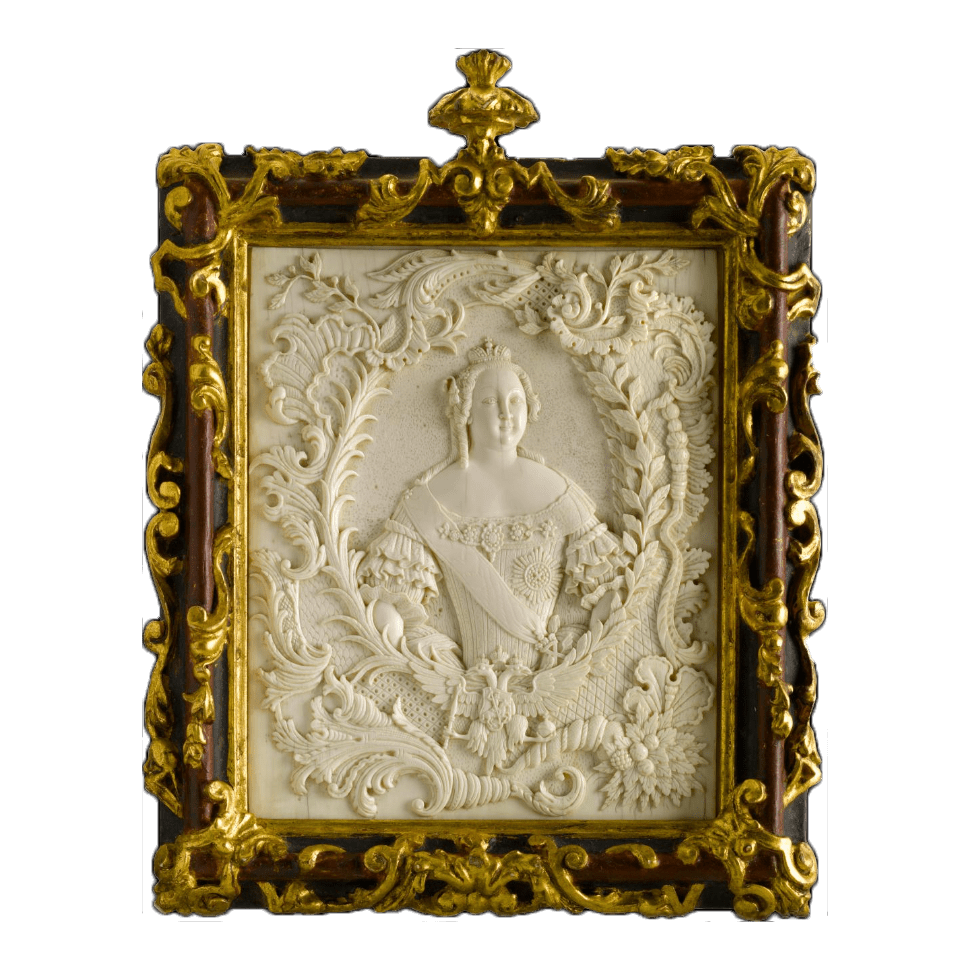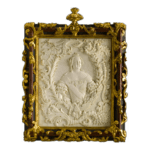This highly unusual rectangular ivory miniature with a painted and gilt wooden frame depicts Catherine the Great (1729-1796), the longest serving female ruler of Russia and among the most famous figures of its history. It is a rare example of a miniature carved in relief, directly into the surface of the ivory; traditionally, miniatures of the period were painted onto ivory or porcelain surfaces. An extraordinary level of textural, rather than painted, detail distinguishes this particular work. The monarch’s features, though life-like and well proportioned, contrast sharply with the swirling, branching forms that surround her in an oval-shaped pattern. These natural motifs – the branches, leaves, flowers and fruits that present Catherine as a vital, fertile leader – are echoed in the golden branches on the rectangular frame. The double-headed eagle carved directly below Catherine’s portrait is the heraldic symbol of the Russian Imperial family.
Though born to a minor German prince from Stettin in Pomerania, Catherine the Great – or Sophie Friederike Auguste von Anhalt-Zerbst, as she was originally known – became one of the most influential monarchs in Russia’s history. Indeed, her reign is often referred to as the Golden Age of the Russian Empire. She married Grand Duke Peter, the grandson of Peter the Great, in 1745. Catherine’s husband became Tsar in 1762, but his reign lasted six months.
After her husband’s death, Catherine assumed the throne and embarked on root-and-branch social, economic and legislative reforms. She expanded Russia’s borders south and west, incorporating the Crimea, Belarus and Lithuania, and eventually extending the country’s borders well into Europe. Catherine was a widely read monarch and patron of the arts who corresponded with the leading thinkers of her age, including Voltaire and Diderot.











